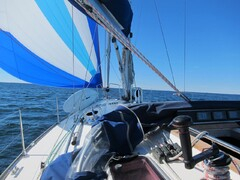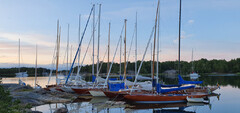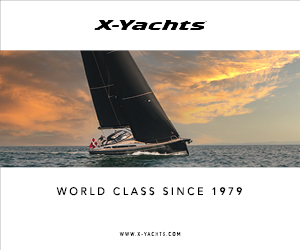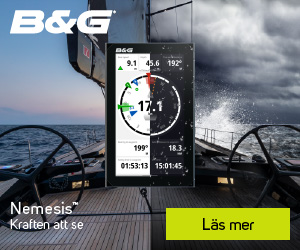THE BATTLE HOTS UP
While the close-quarter combat might be as intense as ever in the Pacific Ocean right now, there’s still time for friendly banter in the heat of conflict.
Take for example the email Ian Walker’s crew on Green Dragon sent to PUMA navigator Andrew Cape after his gamble on the middle lane between the two main Fiji islands – the big talking point of the past few days. Cape's crusade was applauded by Walker's men but they also felt the need to issue a warning.
PUMA Media Crew Member Rick Deppe reveals all ... “We received an email from Ian (Walker) and the lads ... ‘Nice one Capey, but are you sure you can get under the new road bridge?'
"They must have just figured out that Il mostro intended to navigate the gap between the two Fijian Islands and they were trying to spook us.
"The islands are about 15 miles apart and a bridge that size would be a major public works programme for a small South Pacific Island State which, as I understand it, has been going through some major political upheaval over the last few decades.
"Nonetheless, after one last check of all the charts, regards the bridge, we carried on." Carry on they did ... into the lead.
Despite nearly 5,000 miles and 17 days of this marathon leg wiped off, there is a feeling of claustrophobia among the fleet as it makes its way towards the scoring gate at latitude 36 degrees south. The gate lies 430 miles away or more than a day’s sail at the current rate of 12 knots.
As illustrated by the tracks on the Race Viewer, just 40 miles separate first to last while the east-west split is the same. The sea state is calm, the wind moderate, and the spinnakers are being aired for the first time since the Leg 5 start in Qingdao.
As for conditions on board. One word. Hot. "The hottest day" since the start of this leg, according to Telefonica Blue's Simon Fisher.
By the 16:00 GMT Position Report, PUMA held a three-mile advantage over Ericsson 4 with Ericsson 3 (+7) also in sight. Further west, Green Dragon (+32) lurks just over the horizon, with Telefonica Blue a further eight miles adrift.
Catching sight of other boats and being able to picture the whites of the eyes of their opposite numbers on board, has fired the competitive instincts on Ericsson 3, says Media Crew Member, Gustav Morin.
"Suddenly this afternoon we could see both PUMA and Ericsson 4 and everyone got on their toes again,” he wrote. “It felt like the guys stepped up a bit when they could see the other boats.
"It is probably like that in every sport. Of course a 100m sprinter performs better when he has someone running next to him. A pure competitive mind always performs a bit better when racing.”
The compression of the fleet has meant fraught times for Ericsson 4 bowman Phil Jameson.
With the boats in such close proximity, the margins from hero to zero are slim. The recent haemorrhaging of miles by the long-time leader on this leg is causing Jameson's heart to flutter - and his blood to boil.
“We basically have five boats tied together after 5,000 miles of racing. A little shift one way and Telefonica Blue could be leading. A shift the other way could see PUMA in front. Stuck in the middle are Ericsson 3 and ourselves.
"It can be extremely frustrating at times. Different clouds can turn your day from an OK one to an absolute disaster. We spend 11 days building a 55-mile lead early on, and lost 40 of that in three scheds (Position Reports).
"Anyway, here we are, halfway between Fiji and the top of New Zealand in 'the race of the century' fighting for every inch heading toward the scoring gate at 36 south. It's going to be impossible to predict the outcome. I'm sure there will be hearts broken one way or another.”
PUMA’s Deppe suggests that the bunching has meant a virtual re-start to this leg as a precursor the southern ocean ...
"When we arrive at the "start line" (scoring gate) in the next day or so we will have already sailed about 6,000 miles,” he said.
"New Zealand and the gate are about 400 miles away, and people have been using the easy sailing as an opportunity to prepare themselves and their equipment, repairing neck seals, eating mashed potatoes ... whatever it takes to get ready for the next two weeks that we'll be spending in the Southern Ocean, the jewel in the crown of the race.
"The southern ocean ... it’s why people want to do the race and it’s why people keep coming back. A chance to test themselves against the best sailors in the world in the most extreme sailing conditions.”

























